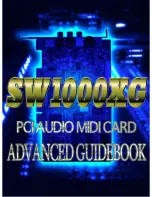
01010101100110101010110011010101011001101010101100110101010110011010101011001101010101100110
100110101010110011010101011001101010101100110101010110011010101011001101010101100110101010110011010101011011010101011
10101010110011010101011011010101001101010100110101101101101010100101
1011010101100110011010101011010101111010111
11010101101101010100111110
1101110110110011
0111011110
111101
011
11
1
PC-3000 EXPRESS / UDMA / PORTABLE
Seagate
ACE Lab
F3 architecture
Technical support: [email protected]
Phone: +7 863 201 50 06
ts.acelaboratory.com
53
8.4.
S
earching for the short connection points
The lines of the read channel differential pair are highlighted on the figure below. You can see there is a resistance
inserted between the lines next to the microcontroller, it distinguishes this pair from that of the write channel. In
addition, there are transition openings between the resistor connection points and microcontroller. Since the PCB on the
drive is fixed to the HDA, these are the transitional openings, which should be short-circuited on the external side of
the board.
Fig. 8.4
Please keep in mind that if the above-mentioned resistor is not present on the differential pair of the read channel, you
can identify the pair experimentally. To do that, you have to identify on the controller board two differential pairs -
those of the read and write channels. Then you need to short-circuit one of them and try starting the drive.
Attention!
During the experimental start keep the selected differential pair bridged all the time to avoid
damaging the service information!
If the read channel is bridged, after power-up the drive will spin up the spindle,
knock for a while and then stop the motor. If the write channel is bridged, the drive will produce no knocking sounds.
If you cannot identify the differential pair of the read channel during the first attempt, try the other one.
















































